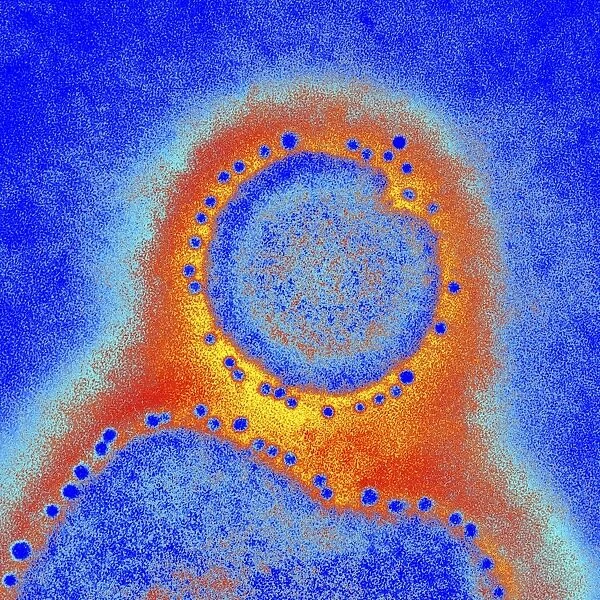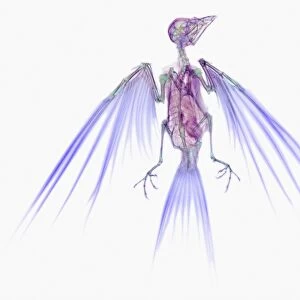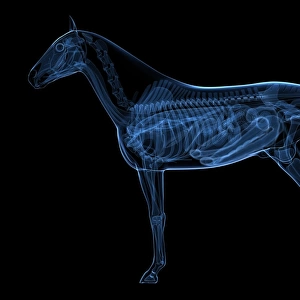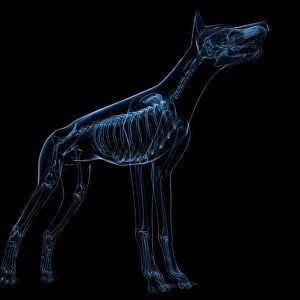Avian influenza virus H7N9, TEM C016 / 6294
![]()

Wall Art and Photo Gifts from Science Photo Library
Avian influenza virus H7N9, TEM C016 / 6294
Avian influenza virus, type A strain H7N9, coloured transmission electron micrograph (TEM). This virus first emerged in the human population in China, in March 2013. The virus consists of ribonucleic acid (RNA), surrounded by a nucleocapsid and a lipid envelope. In the envelope are two types of protein spike, haemagglutinin (H) and neuraminidase (N), which determine the strain of virus. The natural hosts of this virus are wild birds. Unusually, infected domestic chickens do not show symptoms, which increases the potential for spread to humans that have contact with chickens. Nearly a third of human infections are proving to be fatal. As of May 2013 no human to human transmission has been recorded. TEM Credit: CDC
Science Photo Library features Science and Medical images including photos and illustrations
Media ID 9240117
© PASIEKA/SCIENCE PHOTO LIBRARY
Avian Bird Flu Capsid China Envelope Enveloped H7n9 Haemagglutinin Hemagglutinin Influenza A Lipid Neuraminidase Serotype Strain Transmission Electron Micrograph Type A Viral Virion Virological Virology Virus
EDITORS COMMENTS
This print showcases the Avian influenza virus H7N9, a type A strain that first emerged in China in March 2013. The image, captured using transmission electron microscopy (TEM), reveals the intricate structure of this deadly virus. Composed of ribonucleic acid (RNA) surrounded by a nucleocapsid and a lipid envelope, the H7N9 virus exhibits two types of protein spikes known as haemagglutinin (H) and neuraminidase (N). These spikes play a crucial role in determining the strain of the virus. The natural hosts for this avian flu are wild birds; however, what makes H7N9 particularly concerning is its ability to infect domestic chickens without causing any noticeable symptoms. This silent transmission increases the risk for human exposure when individuals come into contact with infected poultry. Alarmingly, almost one-third of human infections have proven fatal since its emergence. Despite its severity, there has been no recorded instance of human-to-human transmission as of May 2013. Nevertheless, scientists remain vigilant about monitoring potential mutations or changes that could enhance transmissibility between humans. This TEM image serves as both an educational tool and a reminder of the ongoing threat posed by avian influenza viruses like H7N9. By studying their structures and understanding their behavior within different host species, researchers can develop strategies to prevent future outbreaks and protect public health worldwide.
MADE IN THE USA
Safe Shipping with 30 Day Money Back Guarantee
FREE PERSONALISATION*
We are proud to offer a range of customisation features including Personalised Captions, Color Filters and Picture Zoom Tools
SECURE PAYMENTS
We happily accept a wide range of payment options so you can pay for the things you need in the way that is most convenient for you
* Options may vary by product and licensing agreement. Zoomed Pictures can be adjusted in the Cart.




